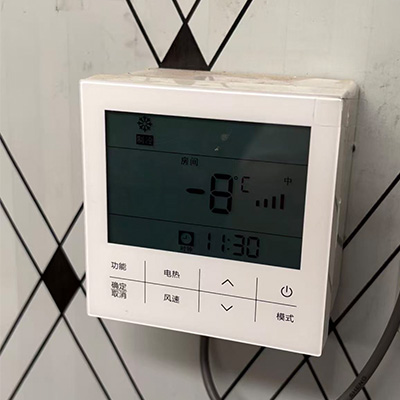1. Definition of supercooling:
The term "subcooling" refers to the process of further cooling the condensed saturated liquid through a specific device (such as a subcooler) and method (or measure) to make its temperature lower than the saturation temperature under condensation pressure. The difference between the liquid temperature before subcooling and the temperature after subcooling is termed as "subcooling degree".
Subcooling is aimed at reducing the amount of flash gas generated during the throttling process in the refrigerant liquid before throttling, decreasing the specific volume occupied by the flash gas, and enhancing the unit refrigeration capacity. Simultaneously, it also elevates the degree of superheat of the return gas, which is beneficial for safeguarding the compressor from wet stroke operation. The representation of subcooling degree on the pressure-enthalpy diagram is as follows:
In engineering, the exhaust pressure is generally approximated as the condensation pressure. The difference between the saturated liquid temperature corresponding to the exhaust pressure and the temperature of the liquid at the outlet of the condenser is regarded as the degree of subcooling. This approximation is made because the pressure drop of the condenser is relatively small compared to that of the evaporator. The difference between the exhaust pressure and the actual condensation pressure is small, and the error introduced by such an approximation can be neglected.
II. Why is subcooling necessary
In simple terms, if the refrigeration system lacks subcooling, the refrigerant will "flash" in the liquid pipe, leading to a reduced cooling effect. For air-cooled condensers, a subcooling degree of 3-5℃ is appropriate.
During normal circulation of the refrigeration system, the outlet of the condenser generally exhibits a certain degree of subcooling. If there is no subcooling, the liquid in the two-phase refrigerant will flash when there is a slight pressure loss in the "liquid pipe". Due to the decrease in pressure, the saturated liquid will inevitably evaporate.
The evaporation of liquid absorbs the surrounding heat, causing the remaining liquid to cool down and reach the saturation temperature under the corresponding pressure. In this way, the two-phase refrigerant moves forward, flashes, and saturates until it reaches the inlet of the evaporator. Eventually, the dryness of the two-phase refrigerant reaching the evaporator will be much higher than the designed dryness, and the liquid phase composition will decrease, which will not meet the evaporation capacity of the evaporator, and the refrigeration effect will naturally decrease.
III. Methods for achieving subcooling: 1) Installing a subcooler after the condenser; 2) Increasing the area of the condenser; 3) Setting up a regenerator and adopting a regenerative cycle
1) Installing a subcooler after the condenser:
In larger refrigeration systems, in order to reduce the temperature of the refrigerant liquid entering the throttle valve, minimize the flash gas generated during or after throttling, and enhance refrigeration efficiency, a specialized device for subcooling, known as a subcooler, is installed after the liquid receiver in the process design.
2) Install a recuperator and adopt a recuperation cycle
There are also some small fluorine refrigeration systems, such as small cold storage facilities, which do not have a dedicated subcooler. However, the liquid supply pipe and the return pipe are wrapped together for insulation, and the low temperature of the return pipe is used to reduce the temperature of the liquid in the liquid supply pipe. Alternatively, a section of the liquid supply pipe and an expansion valve can be directly installed inside the cold storage facility, where the liquid is cooled again to achieve subcooling, thereby improving refrigeration efficiency. At the same time, the temperature of the return pipe is also heated, preventing the compressor from inhaling excessively moist steam and potentially causing liquid hammer.


